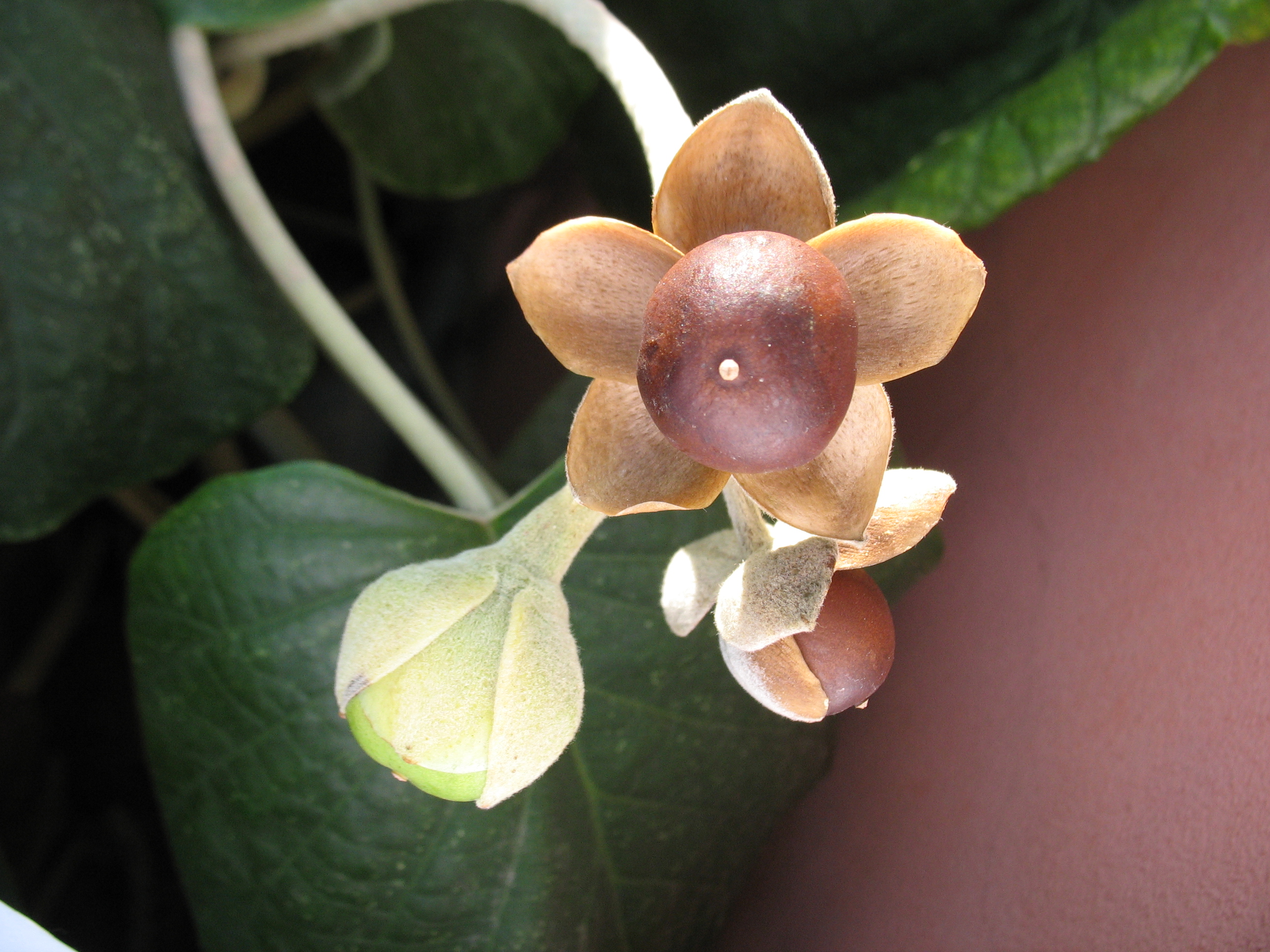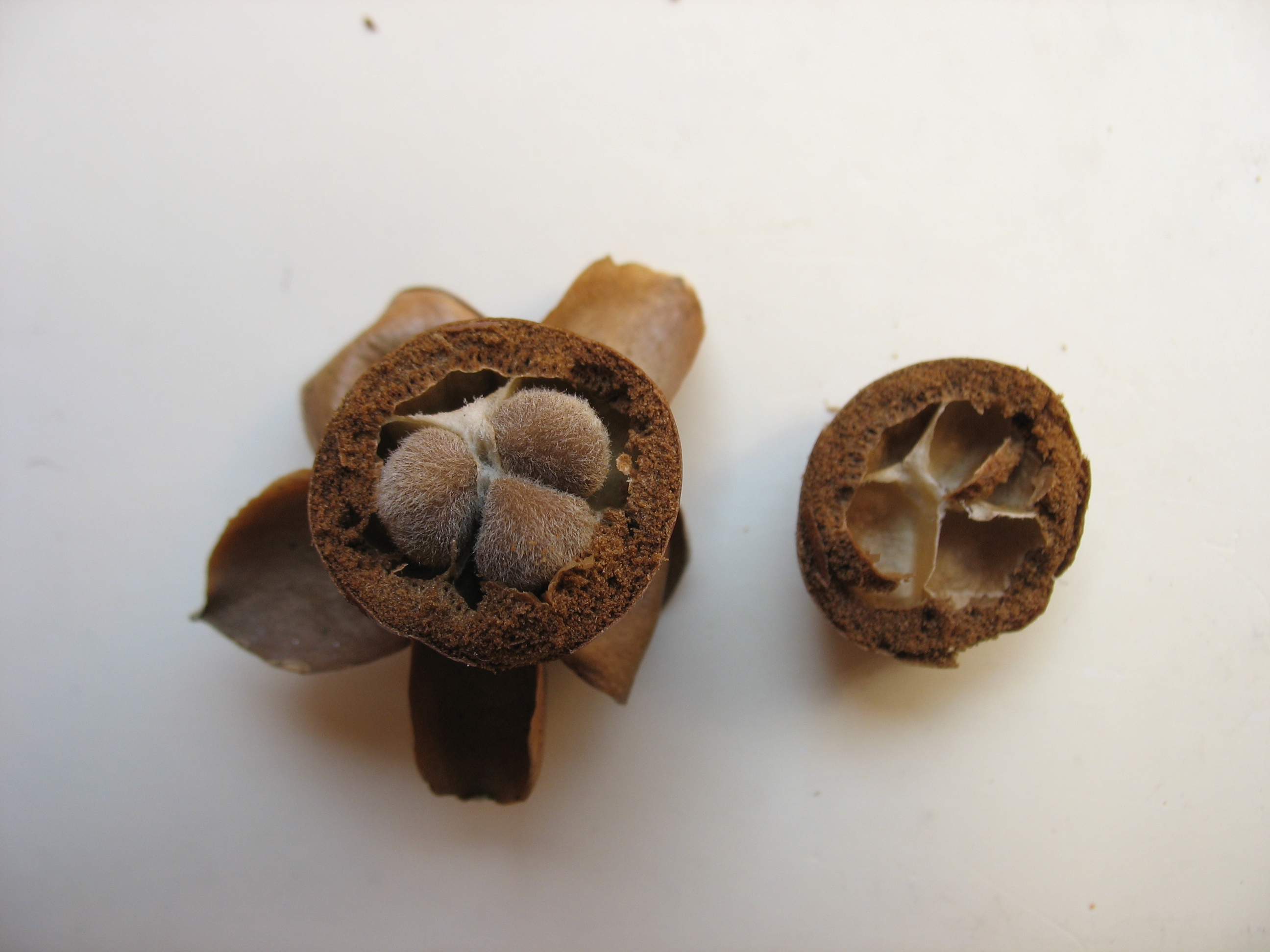Reproduction
As a flowering plant A. nervosa's reproductive organs are located inside the flower of the plant. These flowers contain both male and female organs. The male organ the is called the stamen and is composed of the anther and the filament. The female part of the flower is called the carpel, or pistil, and is made up of three parts, the stigma, style, and ovary.
To begin reproduction gametophytes must be developed. The male gametophytes are developed in the anther and come from microsporocytes that undergo meiosis to form microspores. These microspores eventually develop into grains of pollen which are made up of two cells, the tube cell, and the generative cell. At the time of pollination the generative cell divides and produces two sperm cells.
The
female gametophyte, or megagametophyte, begins developing at roughly the same
time as the male gametophyte within the ovaries. Inside the ovaries there are
ovules that contain one megasporocyte. These megasporocytes undergo meiosis and
produce four haploid megaspores, three of which disin tegrate soon after
development. The remaining megaspore undergoes three mitotic divisions and
produce eight nuclei in an embryo sac within the megaspore. These nuclei begin
to cluster in groups of four on opposite sides of the sac, then one nuclei from
each cluster moves into the center. These nuclei are called polar nuclei, and will form a polar cell after cells walls develope around them. Cell walls also
form around one of the clusters of three nuclei at the end of the sac forming
antipodals. The opposite cluster forms the egg apparatus, one becoming the egg
cell the others become synergids, or helpers. These three cells look very
similar, but only the egg will continue development. Then the antipodals and the
synergids deteriorate and we are finally left with the female gametophyte
containing one egg cell and the polar cell.
tegrate soon after
development. The remaining megaspore undergoes three mitotic divisions and
produce eight nuclei in an embryo sac within the megaspore. These nuclei begin
to cluster in groups of four on opposite sides of the sac, then one nuclei from
each cluster moves into the center. These nuclei are called polar nuclei, and will form a polar cell after cells walls develope around them. Cell walls also
form around one of the clusters of three nuclei at the end of the sac forming
antipodals. The opposite cluster forms the egg apparatus, one becoming the egg
cell the others become synergids, or helpers. These three cells look very
similar, but only the egg will continue development. Then the antipodals and the
synergids deteriorate and we are finally left with the female gametophyte
containing one egg cell and the polar cell.
 Now
the pollen must reach the stigma of flower. This process, called pollination, is
usually accomplished by an outside source such as wind or insects. After pollen
grains have come into contact with the stigma fertilization can begin. Assuming
the pollen is compatable, moisture is absorbed into the pollen and a pollen tube
comes out through a pore in the wall. This pollen cell with its three nuclei and
pollen tube extended is now considered mature. The tube grows toward the ovary
of the flower through the style and eventually penetrates the embryo sac and
discharges its contents. One of the sperm cells fuses with the egg forming a
diploid zygote, the other sperm fuses with the polar cell which then will form
the endosperm nucleus. Meanwhile the tube nucleus disintegrates. This entire
process is called double fertilization, a process unique to flowering plants and
results in polyploid endosperm tissue.
Now
the pollen must reach the stigma of flower. This process, called pollination, is
usually accomplished by an outside source such as wind or insects. After pollen
grains have come into contact with the stigma fertilization can begin. Assuming
the pollen is compatable, moisture is absorbed into the pollen and a pollen tube
comes out through a pore in the wall. This pollen cell with its three nuclei and
pollen tube extended is now considered mature. The tube grows toward the ovary
of the flower through the style and eventually penetrates the embryo sac and
discharges its contents. One of the sperm cells fuses with the egg forming a
diploid zygote, the other sperm fuses with the polar cell which then will form
the endosperm nucleus. Meanwhile the tube nucleus disintegrates. This entire
process is called double fertilization, a process unique to flowering plants and
results in polyploid endosperm tissue.
Previous: Nutrition Next: Interactions